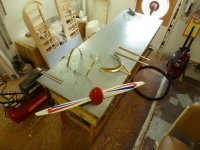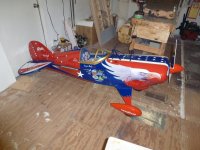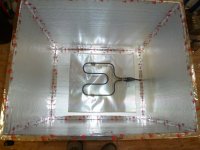acerc
640cc Uber Pimp
This post and the following two I have on another thread, thought I would put it here for a better understanding of where I am.
I need to make, a plug, to vacuum form a canopy. I have tried PETG, Acrylic, and Plexiglas. The first two sagged to much for my abilities, kept getting wrinkles in it. The plexi worked real well but I fear it may be to brittle in the long run. I am currently using a Plaster of Paris plug I poured from the original cracked canopy. I have been told that I need a lighter plug that I can affix to the vac table and place the table/mold over the glass on the oven to eliminate the wrinkles. I have read, researched, and had a few fellas try to tell me how. What I have read is mostly commercial, my set up is far short of that. And the few guys that told me a thing or two, well, I'll just say none of them worked out. I watched a tutorial on a plastic companies website which showed the inverted method and it seems that may be my best bet. But to be quite frank, I have no clue as to what I am actually doing.
I need to make, a plug, to vacuum form a canopy. I have tried PETG, Acrylic, and Plexiglas. The first two sagged to much for my abilities, kept getting wrinkles in it. The plexi worked real well but I fear it may be to brittle in the long run. I am currently using a Plaster of Paris plug I poured from the original cracked canopy. I have been told that I need a lighter plug that I can affix to the vac table and place the table/mold over the glass on the oven to eliminate the wrinkles. I have read, researched, and had a few fellas try to tell me how. What I have read is mostly commercial, my set up is far short of that. And the few guys that told me a thing or two, well, I'll just say none of them worked out. I watched a tutorial on a plastic companies website which showed the inverted method and it seems that may be my best bet. But to be quite frank, I have no clue as to what I am actually doing.



